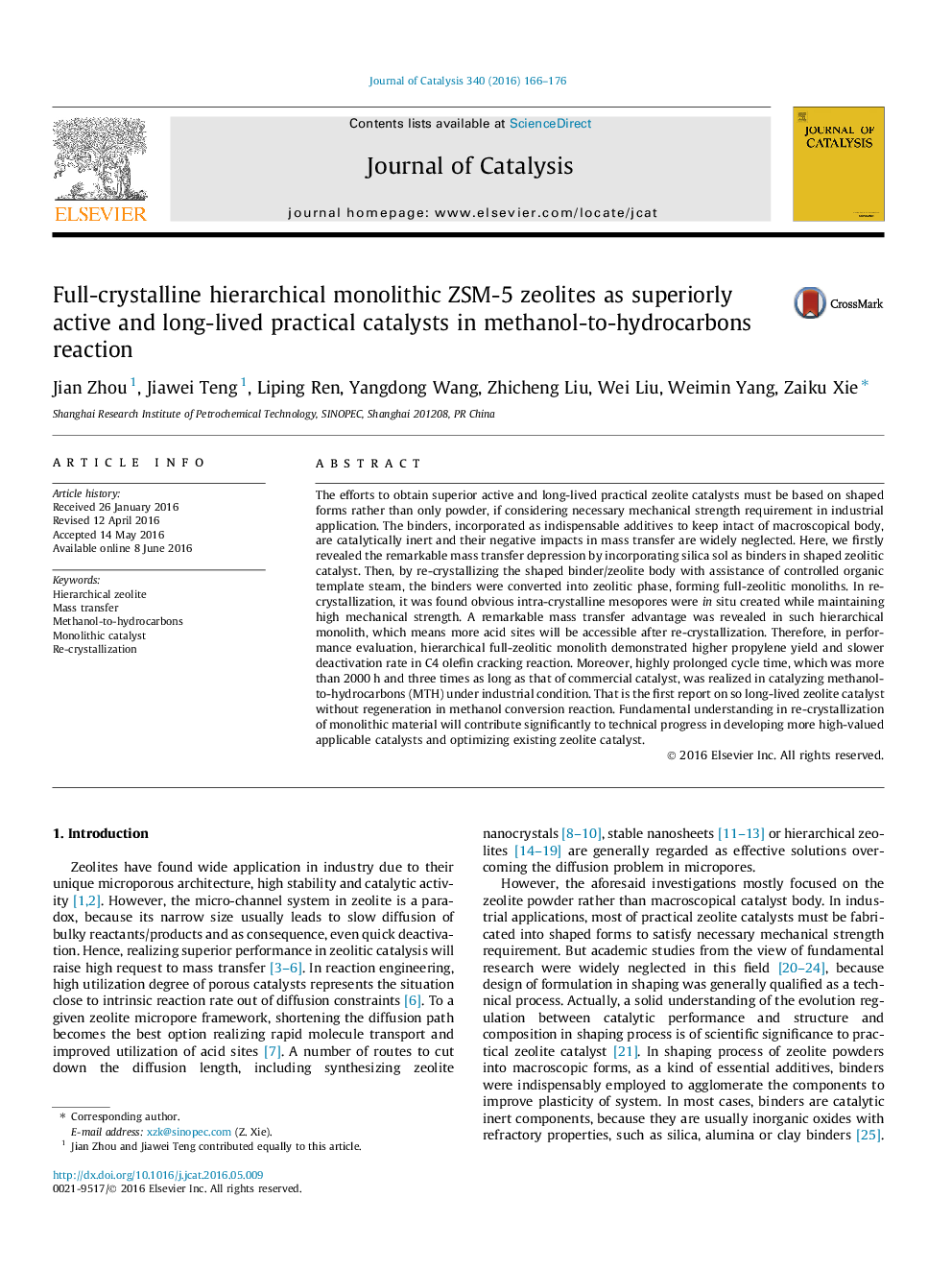| Article ID | Journal | Published Year | Pages | File Type |
|---|---|---|---|---|
| 60518 | Journal of Catalysis | 2016 | 11 Pages |
•Full-crystalline hierarchical monolithic zeolite was prepared by re-crystallization.•Re-crystallization was performed under steam atmosphere to keep mechanical strength.•Intra-crystalline mesopores was created, leading to obvious mass transfer advantage.•Hierarchical zeolitic monolith remarkably prolonged the cycle time in MTH reaction.
The efforts to obtain superior active and long-lived practical zeolite catalysts must be based on shaped forms rather than only powder, if considering necessary mechanical strength requirement in industrial application. The binders, incorporated as indispensable additives to keep intact of macroscopical body, are catalytically inert and their negative impacts in mass transfer are widely neglected. Here, we firstly revealed the remarkable mass transfer depression by incorporating silica sol as binders in shaped zeolitic catalyst. Then, by re-crystallizing the shaped binder/zeolite body with assistance of controlled organic template steam, the binders were converted into zeolitic phase, forming full-zeolitic monoliths. In re-crystallization, it was found obvious intra-crystalline mesopores were in situ created while maintaining high mechanical strength. A remarkable mass transfer advantage was revealed in such hierarchical monolith, which means more acid sites will be accessible after re-crystallization. Therefore, in performance evaluation, hierarchical full-zeolitic monolith demonstrated higher propylene yield and slower deactivation rate in C4 olefin cracking reaction. Moreover, highly prolonged cycle time, which was more than 2000 h and three times as long as that of commercial catalyst, was realized in catalyzing methanol-to-hydrocarbons (MTH) under industrial condition. That is the first report on so long-lived zeolite catalyst without regeneration in methanol conversion reaction. Fundamental understanding in re-crystallization of monolithic material will contribute significantly to technical progress in developing more high-valued applicable catalysts and optimizing existing zeolite catalyst.
Graphical abstractFigure optionsDownload full-size imageDownload high-quality image (105 K)Download as PowerPoint slide
